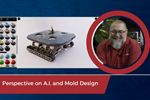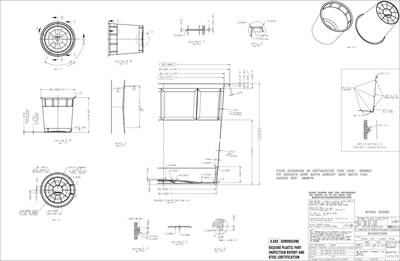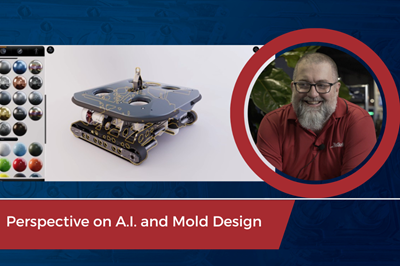Automated molding DFM offers draft and thickness review, undercut analysis and parting line projection. Source | Fictiv
Designing for injection molding poses unique challenges that can disrupt production timelines and delay product launches. However, combining human expertise with automated design for manufacturability (DFM) can reduce the cycle of revisions, testing and mold validation, resulting in streamlined processes that minimize costly delays and optimize injection mold designs from the outset.
Automated, data-driven insights enable engineers to fine-tune their designs before production begins, saving time and reducing manufacturing costs. By incorporating automated DFM tools early in the design process, engineers can avoid bottlenecks in tooling, leading to faster time-to-market.
“Automated DFM for injection molding is an industry first. Typically, DFM for injection molded parts happens after the quote and can take weeks. Automated DFM is available instantly and pre-quote,”
says Robbie Long, product marketing manager, injection molding, Fictiv.
Automated DFM for injection molding gives a holistic view of the moldability of the part design and flags any design flaws that might hinder the part's moldability, cause cosmetic or structural deformation or damage the mold. The system also identifies areas of the design that could have a considerable cost impact that would necessitate side action mechanisms.
For example, the automated DFM tool analyzes the part for draft and thickness and automatically flags flaws that need to be addressed with a color heatmap to highlight areas of concern. For complex part geometries like undercuts, the tool provides a visual overview of the areas that require solutions, like slides or lifters with visual markers.
The part thickness feedback is based on the plastic material selection and general molding guidelines. The mold materials aren't considered for this initial DFM. The tool provides a color map of draft angles to show where there may be areas with no draft. Specific requirements based on tool finishes and details around mold cooling channels and runner design can be reviewed and discussed with technical experts following the initial automated DFM.
The tool analyzes standard CAD file outputs uploaded to the DFM software platform. There is currently no direct integration with separate CAD software.
While the automated DFM tool provides invaluable insights, mold designers also need access to technical expertise to fully resolve complex manufacturability challenges.
"After the initial automated DFM feedback and request for a quote, experts should provide further DFM analysis and work with the mold designer on necessary design revisions. Then once design changes are agreed upon, the revised part design file can easily be uploaded to replace the original file in the DFM platform. Customers receive immediate automated DFM feedback with each new file uploaded, as well as expert DFM feedback with the updated quote,” says Long.
By combining the power of automated DFM software with hands-on technical guidance, mold designers can streamline the injection molding workflow, minimize costly delays and get products to market faster.
Related Content
How to Analyze and Optimize Cutting Conditions to Reduce Cycle Time
Plastic injection mold design and manufacturing company puts NC program optimization software module to the test. The results were surprising.
Read MoreMold Design Review: The Complete Checklist
Gerardo (Jerry) Miranda III, former global tooling manager for Oakley sunglasses, reshares his complete mold design checklist, an essential part of the product time and cost-to-market process.
Read MoreHow to Select a Mold Temperature Controller
White paper shares how cooling channel analysis, which collects maximum pressure drop, total flow rate and heat dissipation, eases the performance evaluation of mold temperature controllers.
Read MoreWhat Is Scientific Maintenance? Part 1
Part one of this three-part series explains how to create a scientific maintenance plan based on a toolroom’s current data collection and usage.
Read MoreRead Next
How Moldmakers Impact New Product Development
Dynamic Tool Corp. discusses the mold builder’s role in defining injection molds to support new product development with MMT Editorial Director Christina Fuges.
Read MoreIt Starts With the Part: A Plastic Part Checklist Ensures Good Mold Design
All successful mold build projects start with examining the part to be molded to ensure it is moldable and will meet the customers' production objectives.
Read MoreVIDEO: Perspective on A.I. and Mold Design
Bill Genc of TopSolid shares his perspective on the benefits of and barriers to using artificial intelligence in mold design.
Read More























